Abstract
Two studies investigated the transfer of respondent elicitation through equivalence classes. In Experiment 1, match-to-sample procedures were used to teach 8 subjects two four-member equivalence classes. One member of one class was then paired with electric shock, and one member of the other class was presented without shock. All remaining stimuli were then presented. Using skin conductance as the measure of conditioning, transfer of conditioning was demonstrated in 6 of the 8 subjects. In Experiment 2, similar procedures were used to replicate the results of Experiment 1 and investigate the transfer of extinction. Following equivalence training and conditioning to all members of one class, one member was then presented in extinction. When the remaining stimuli from this class were then presented, they failed to elicit skin conductance. In the final phase of the experiment, the stimulus that was previously presented in extinction was reconditioned. Test trials with other members of the class revealed that they regained elicitation function. These results demonstrate that both respondent elicitation and extinction can transfer through stimulus classes. The clinical and applied significance of the results is discussed.
Keywords: stimulus equivalence, transfer of function, classical conditioning, extinction, skin conductance, fear, humans
Full text
PDF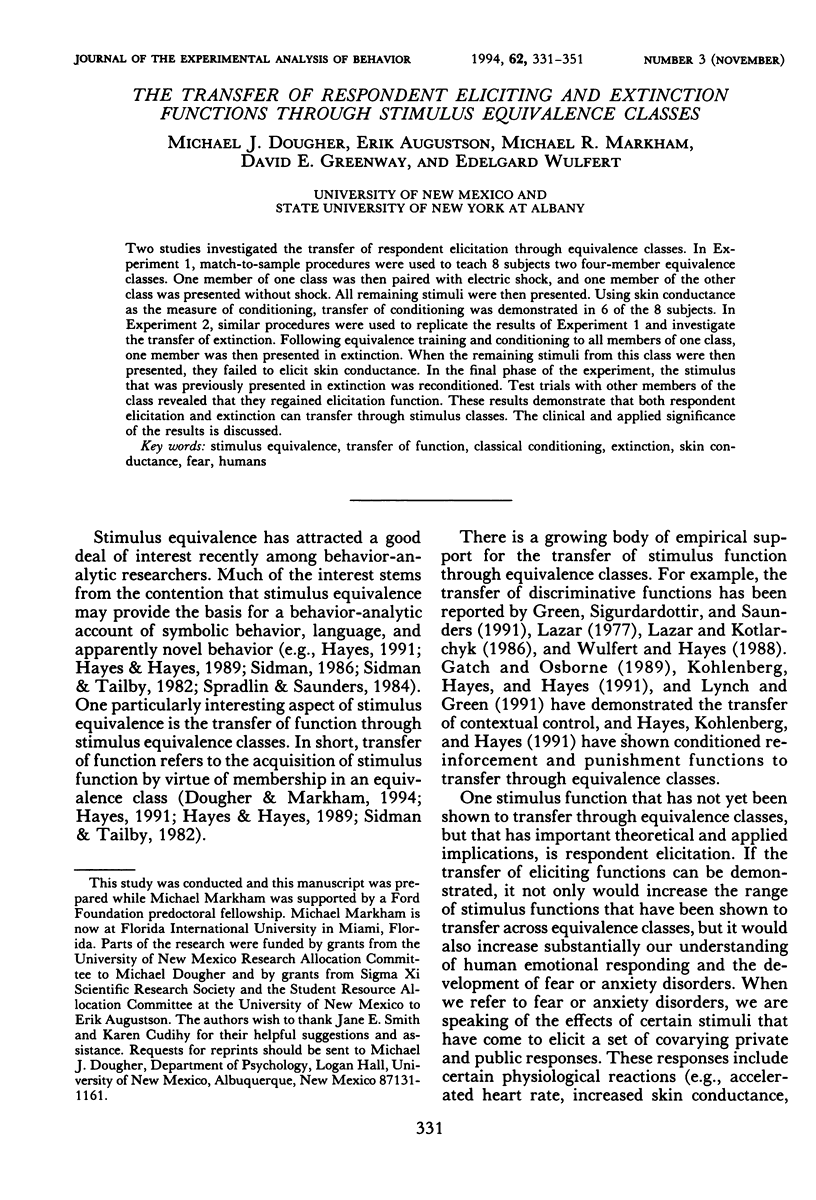
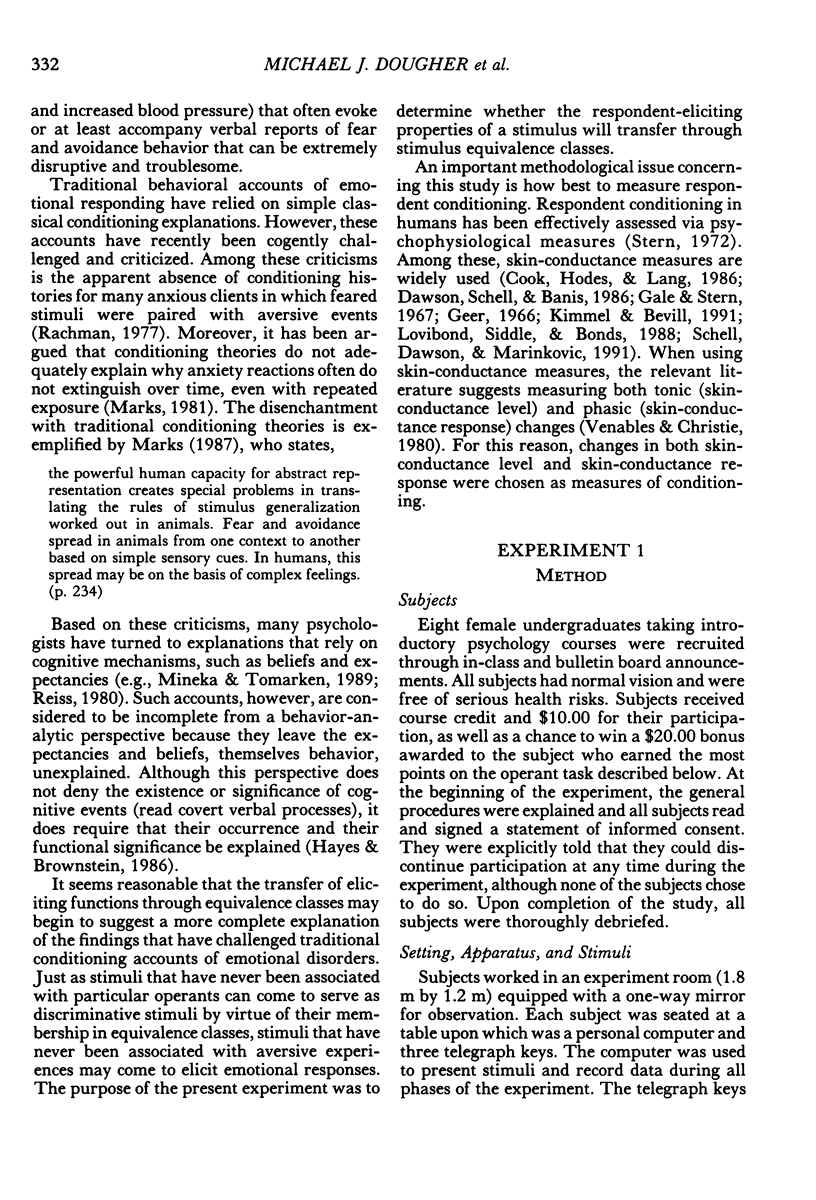
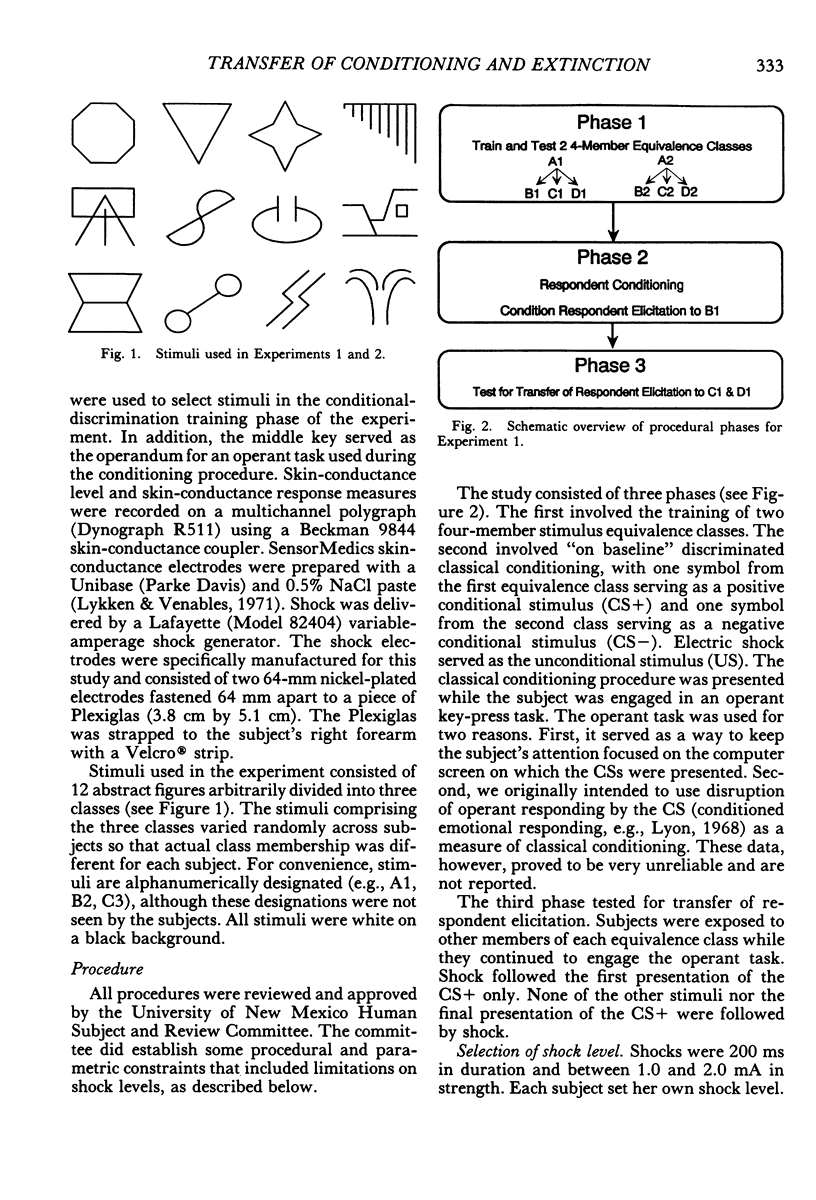
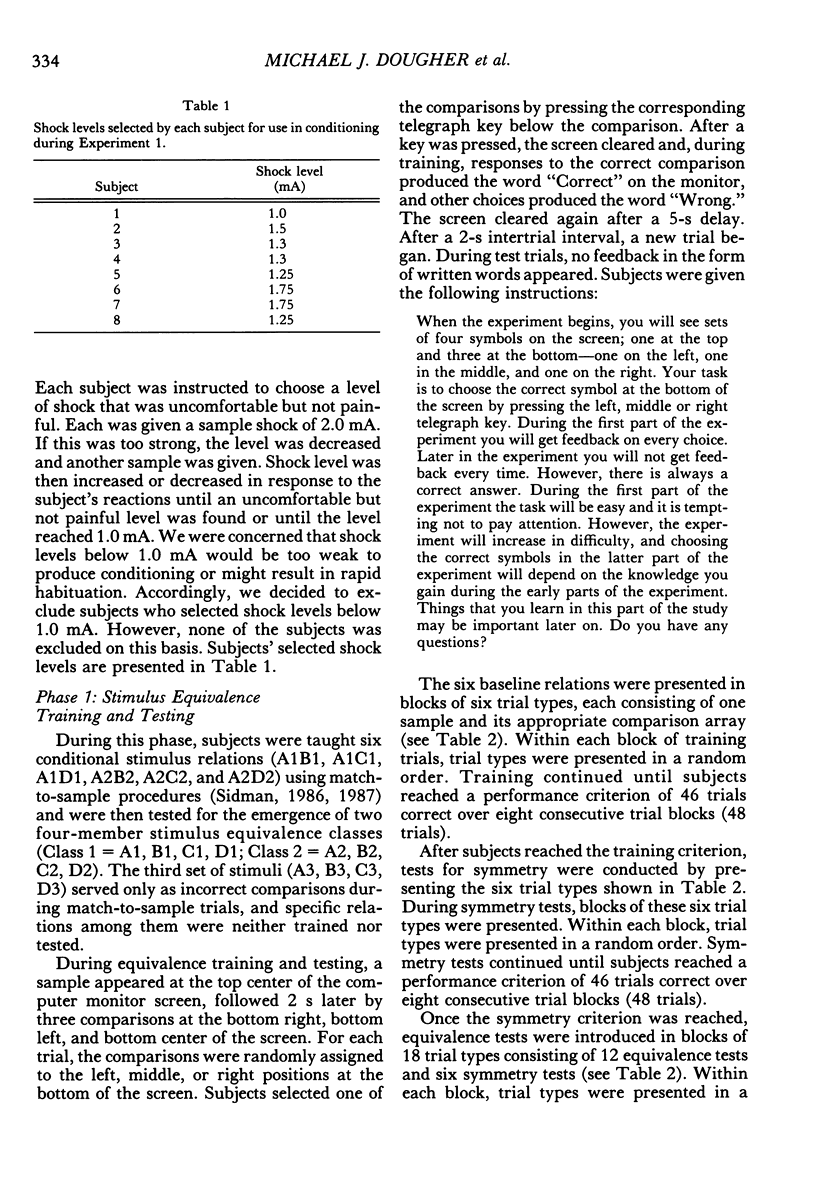
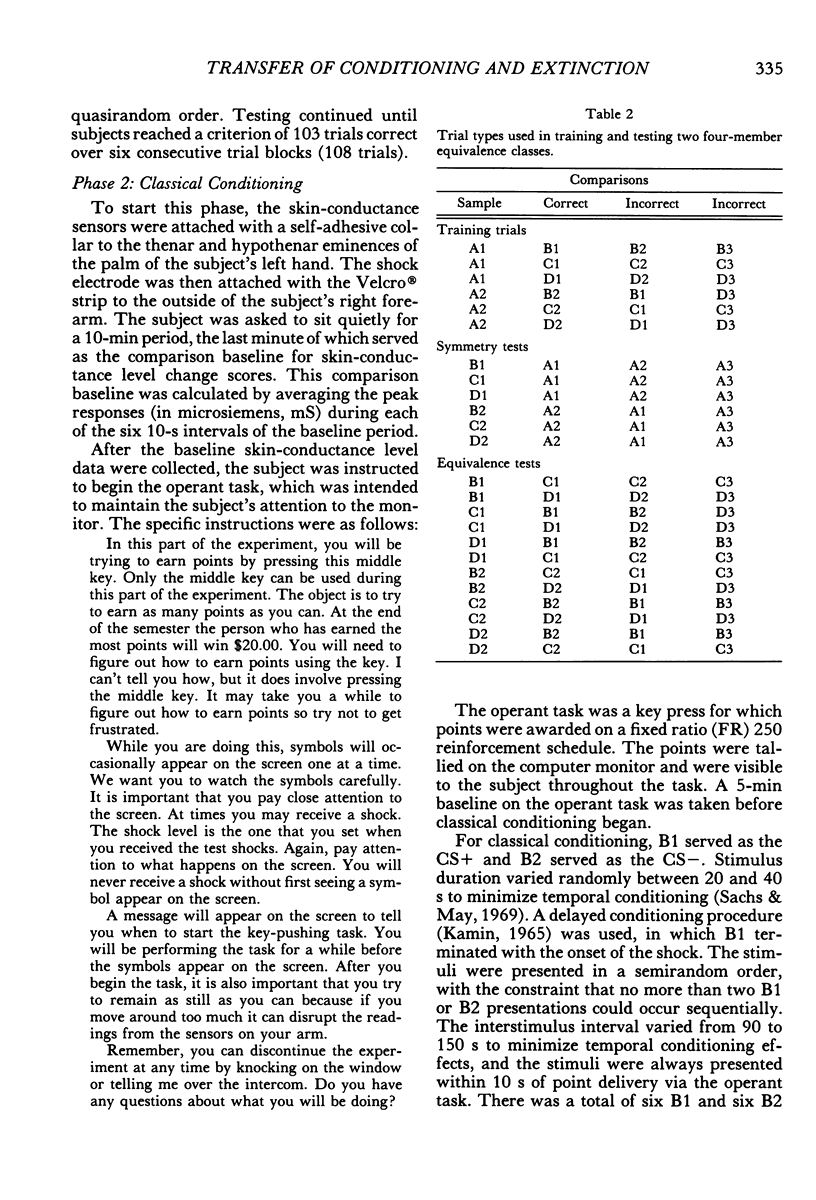
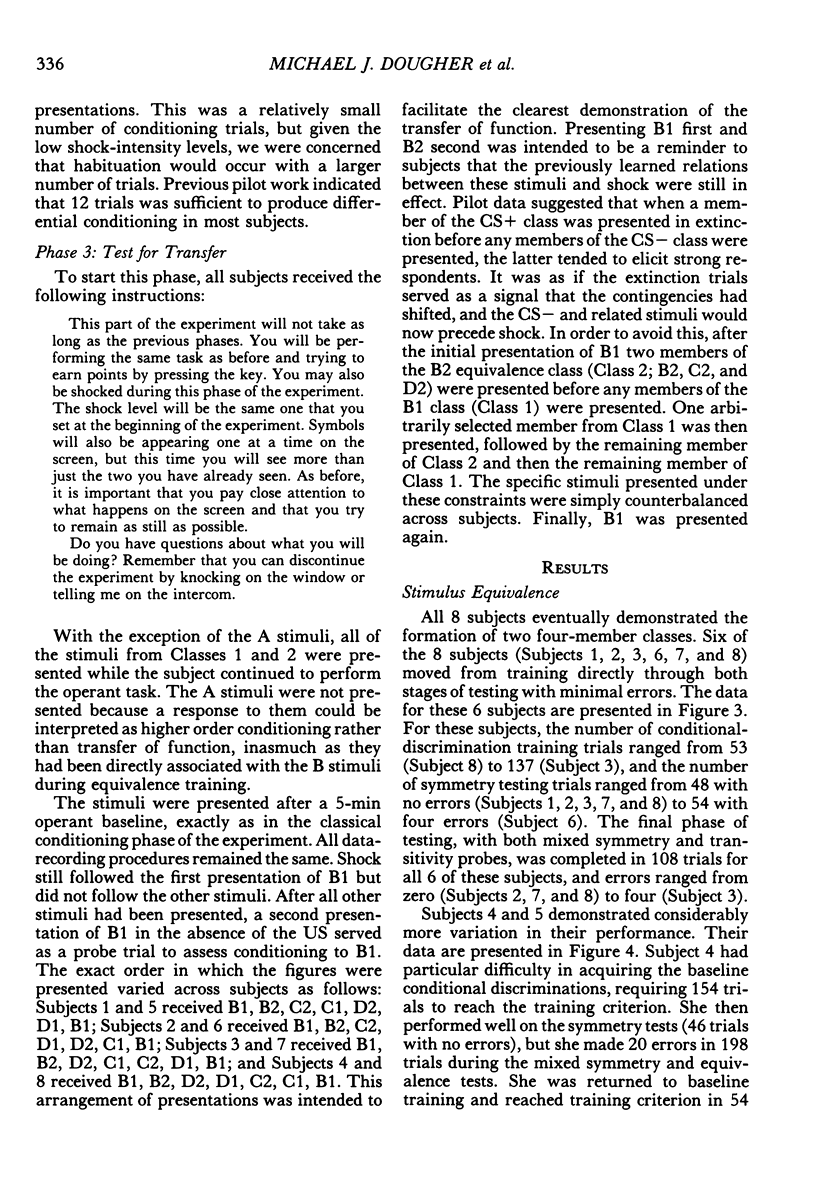
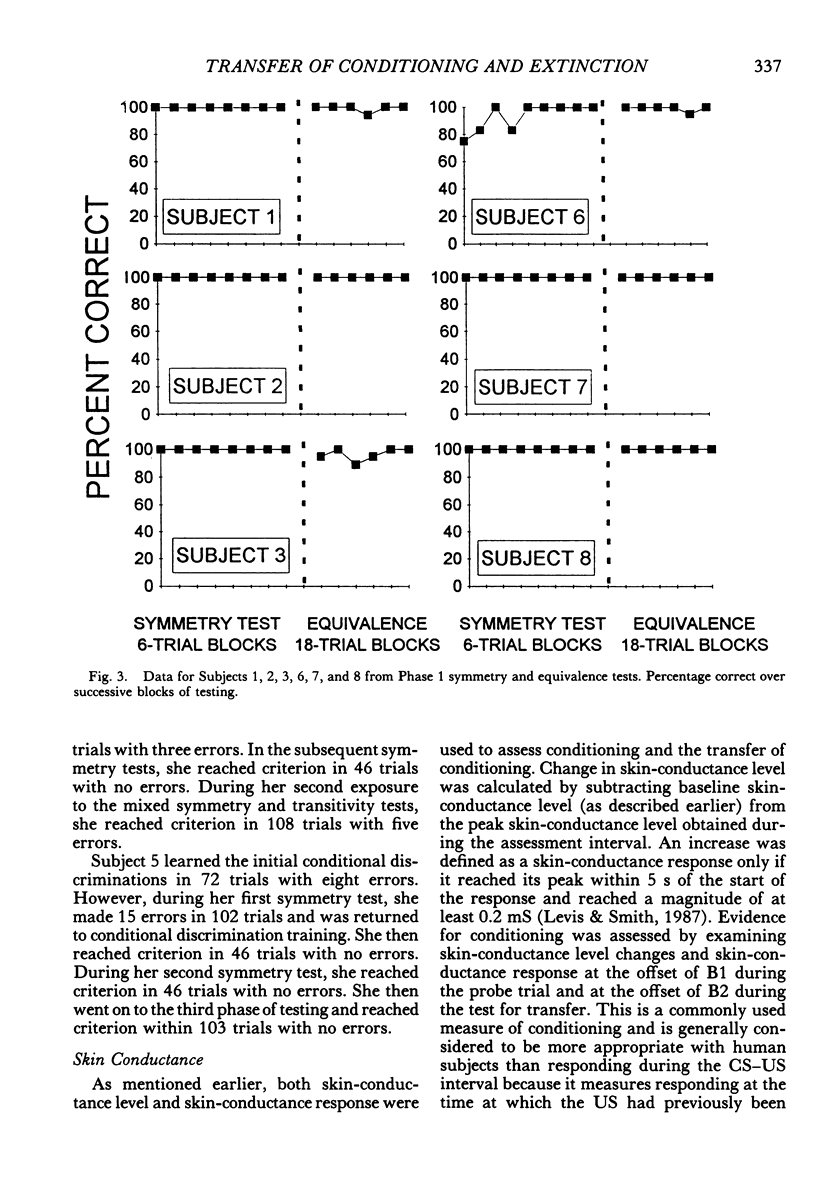
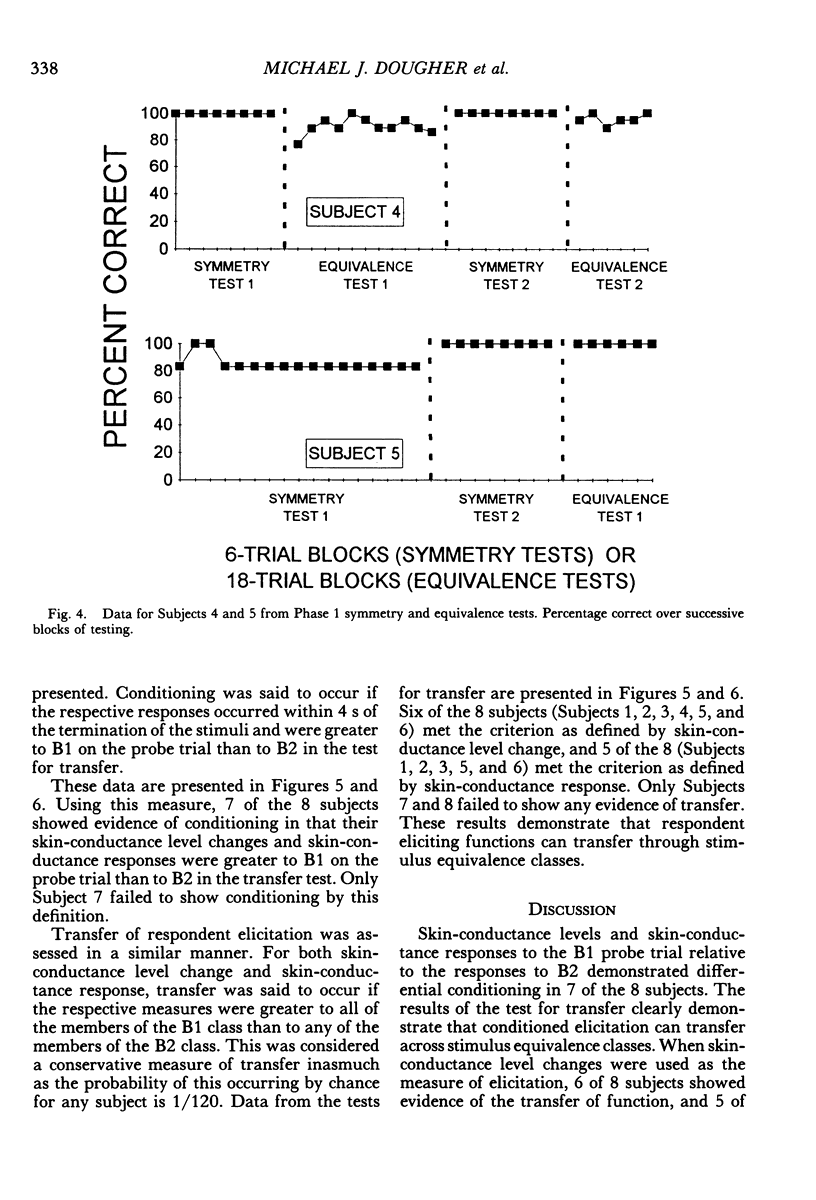
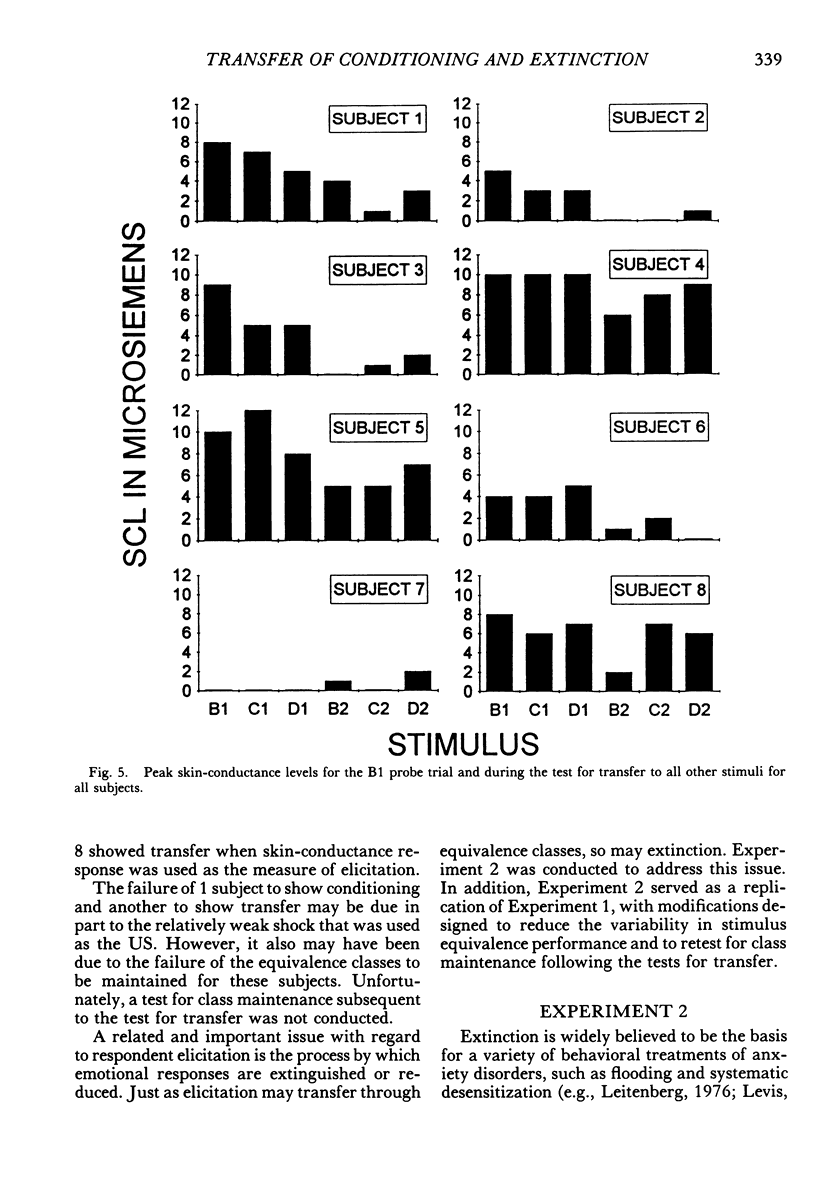
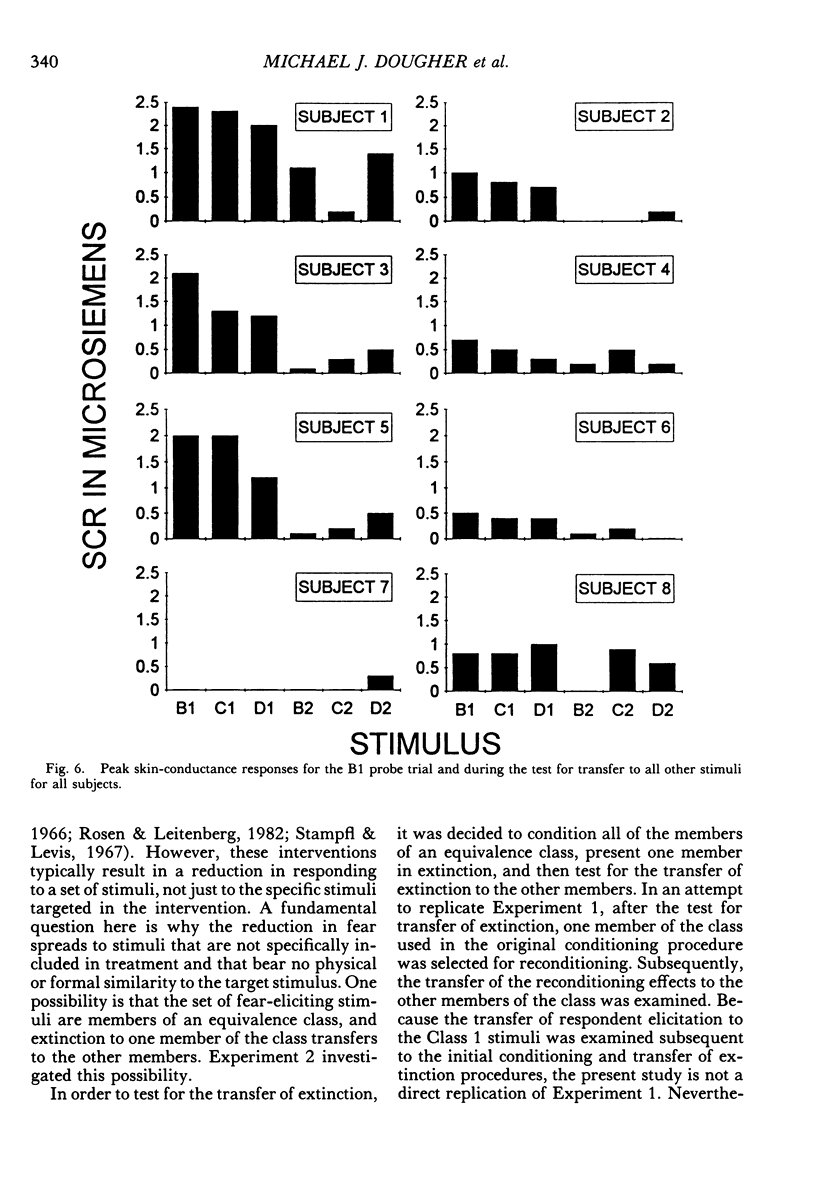
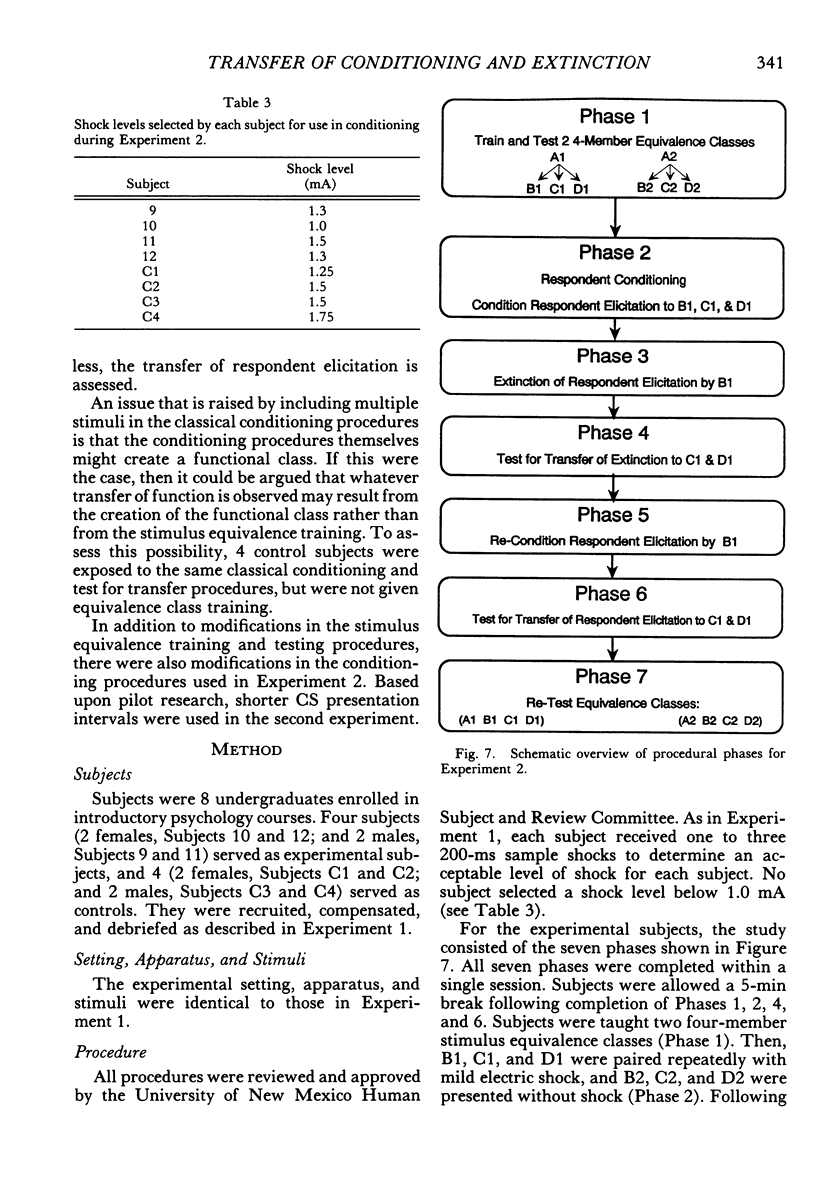
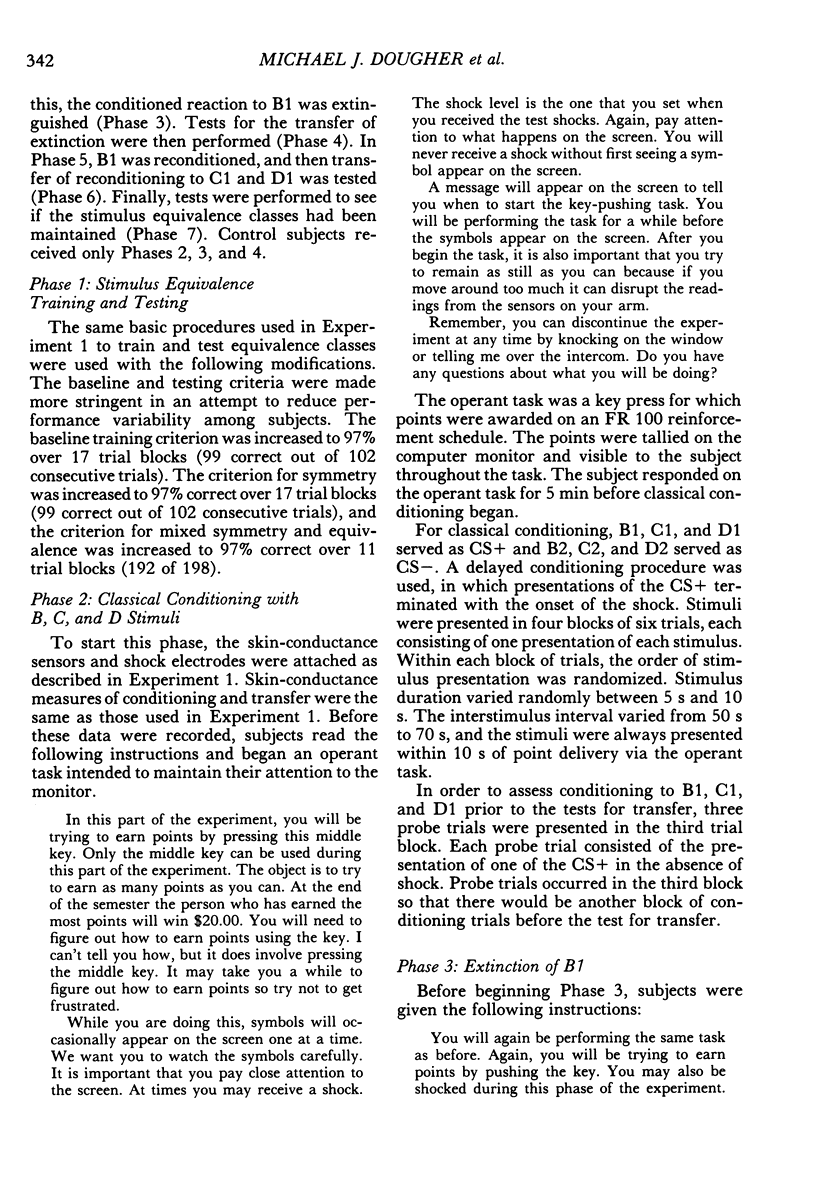
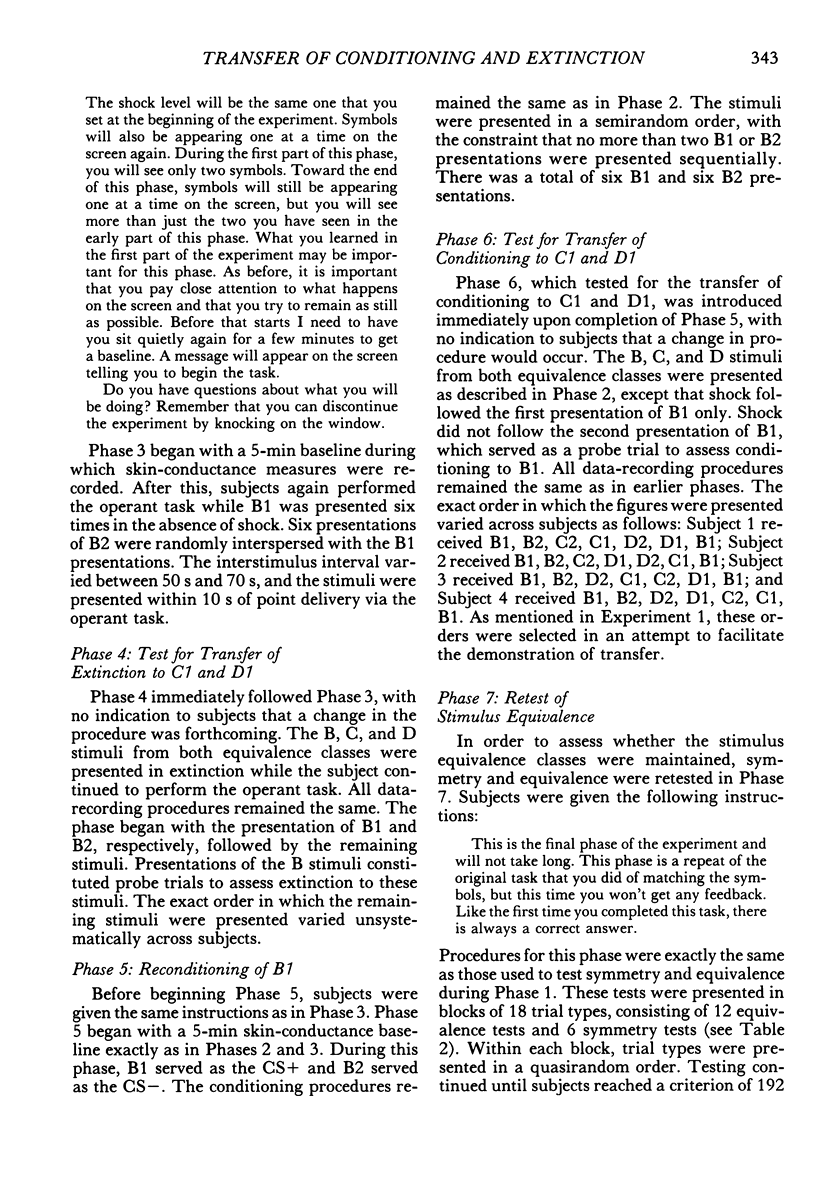
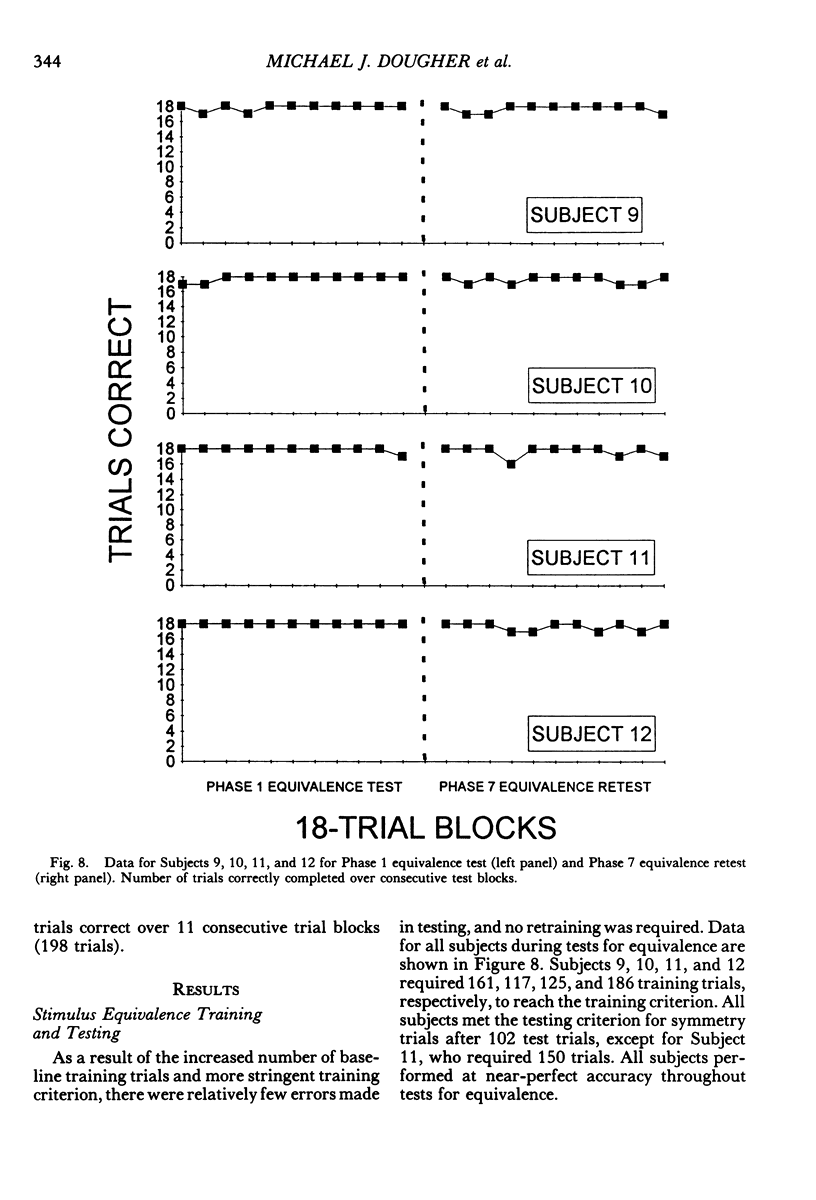
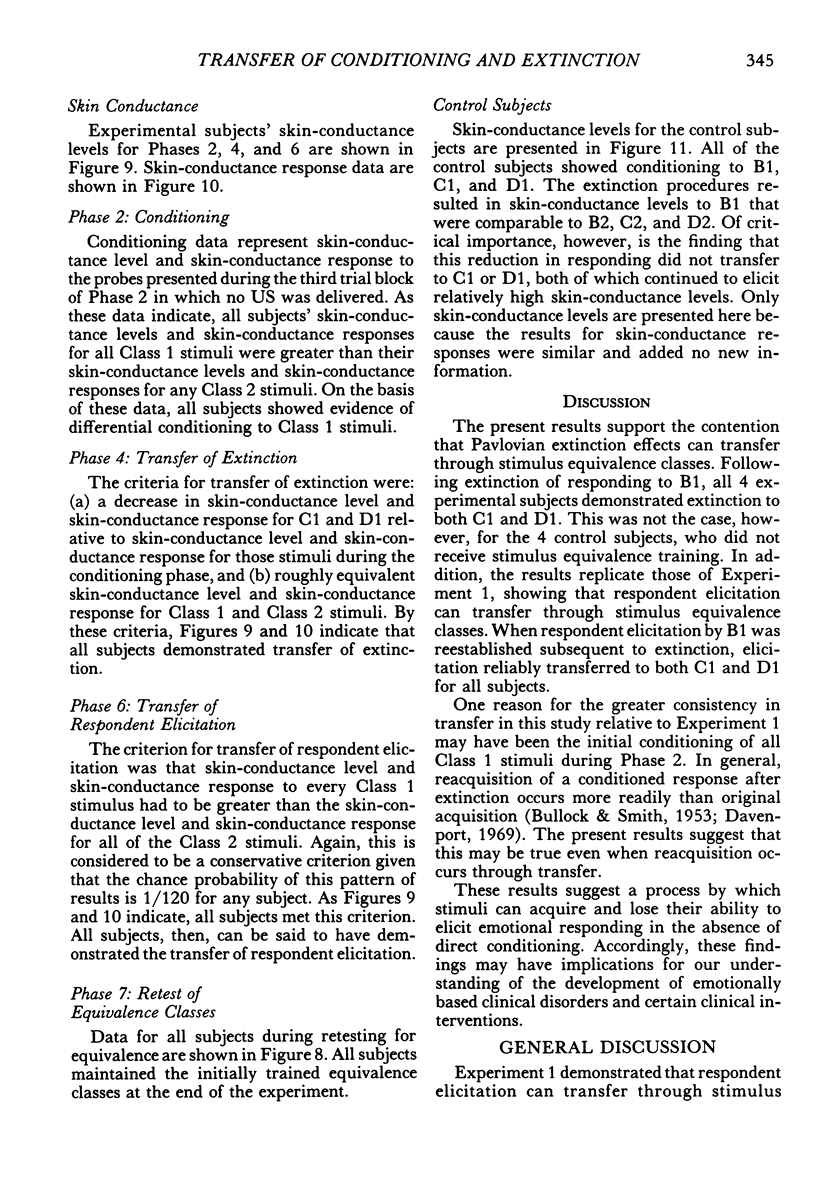
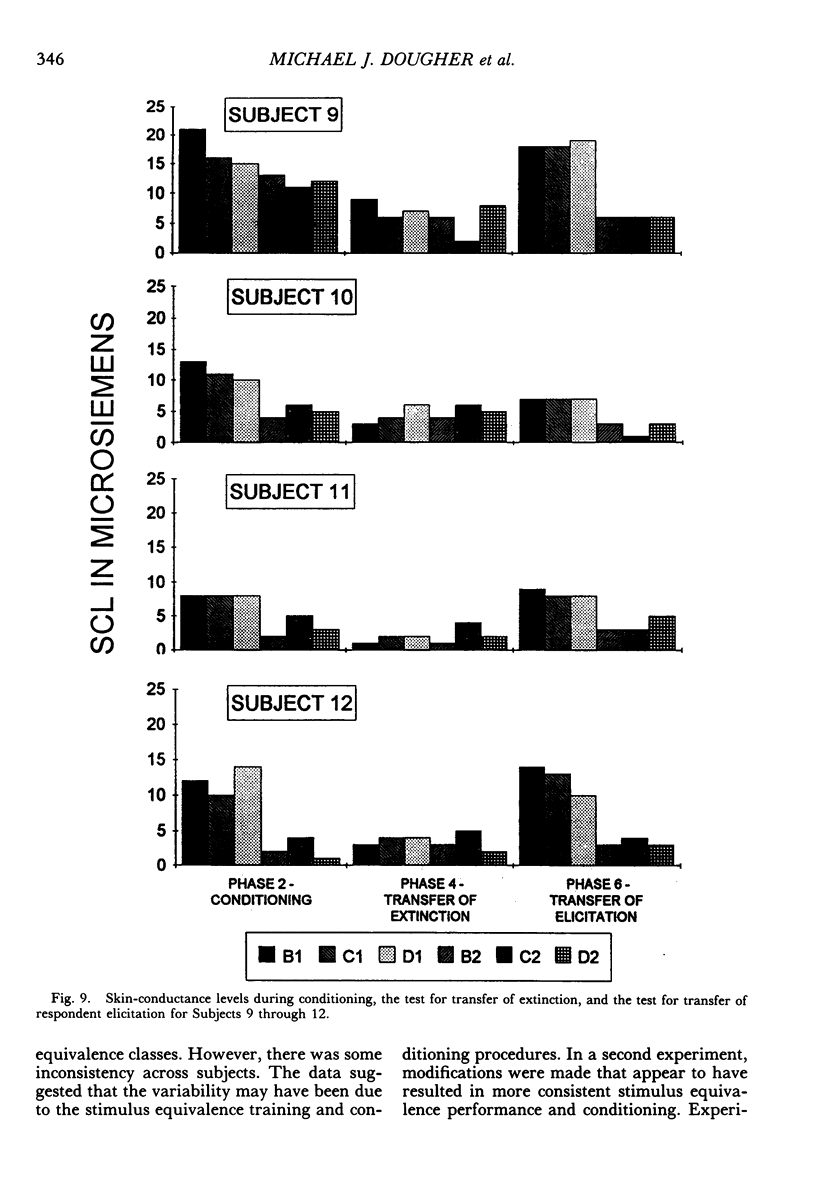
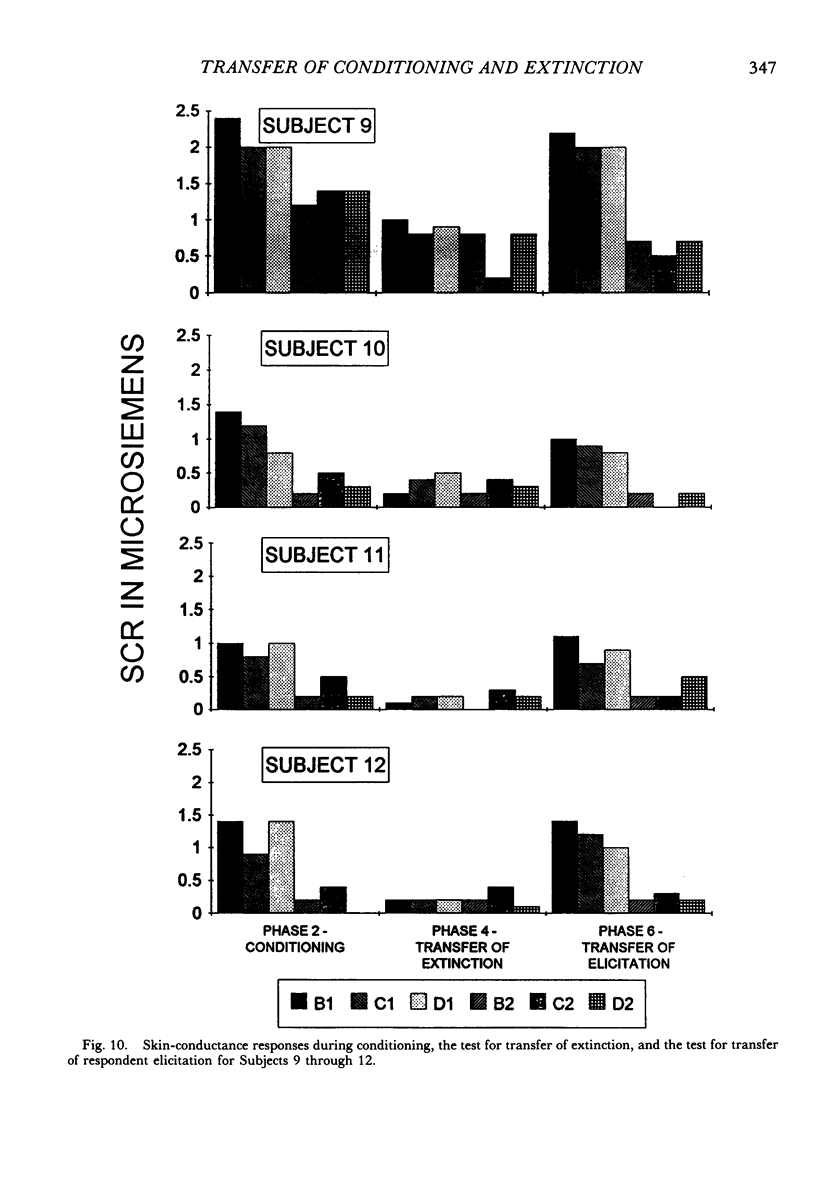
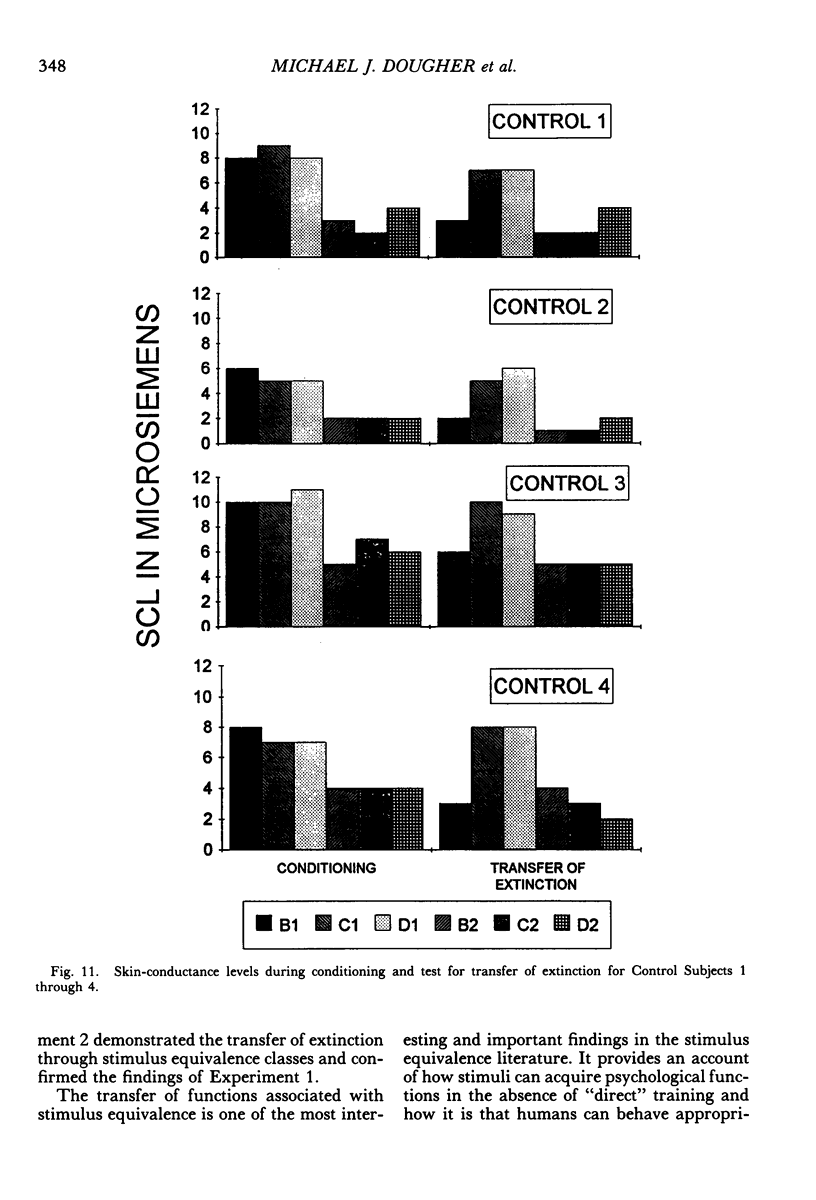
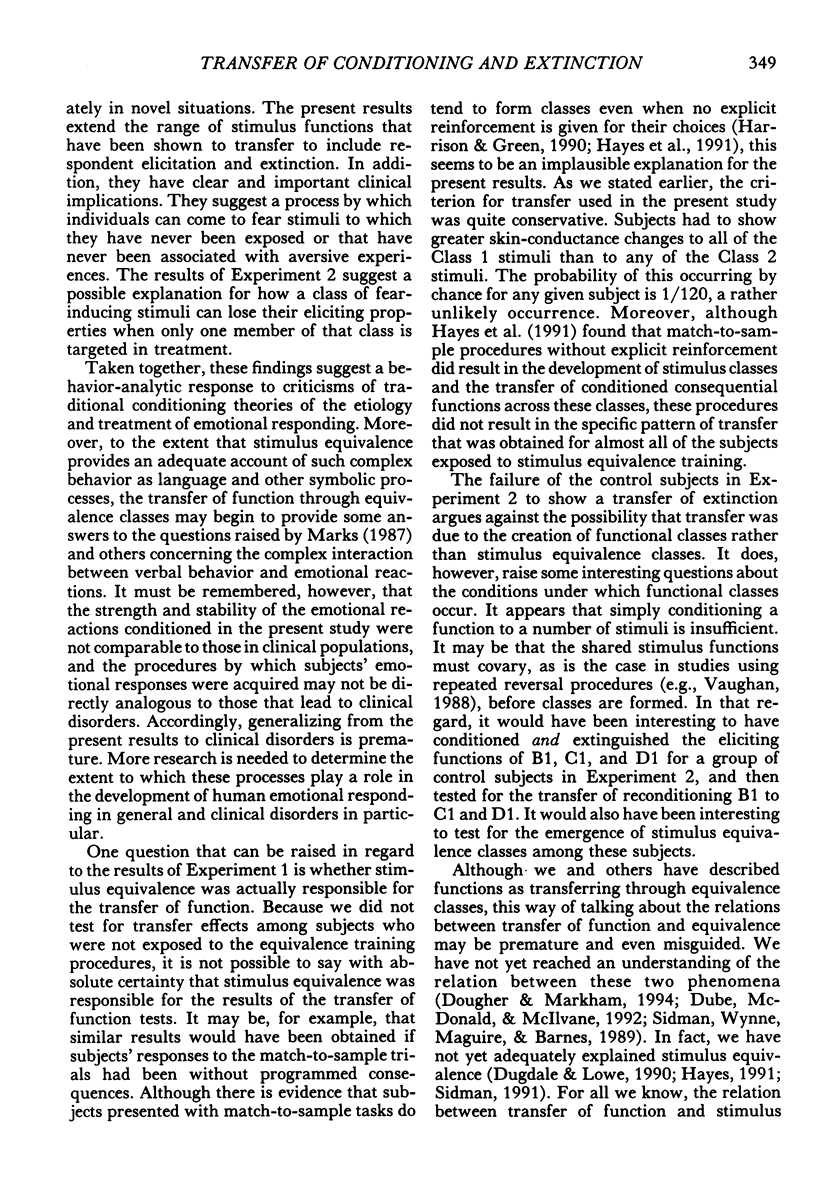
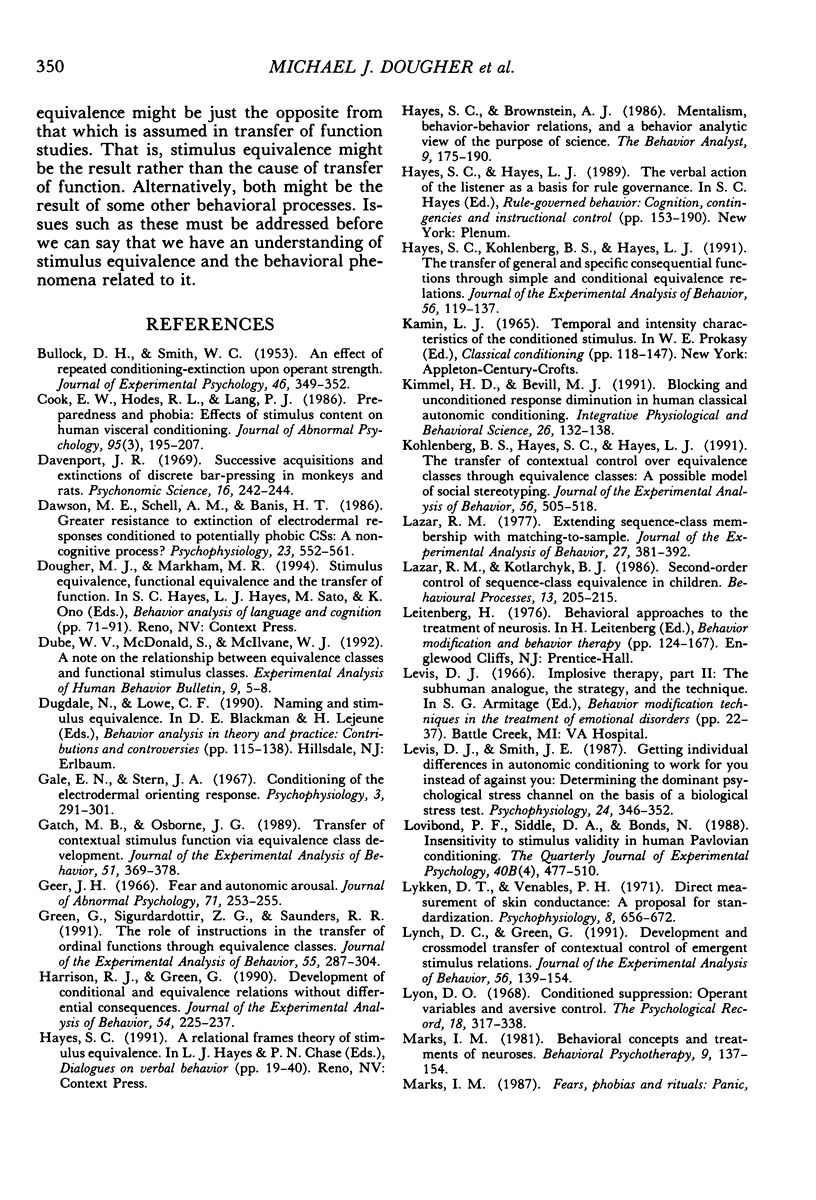
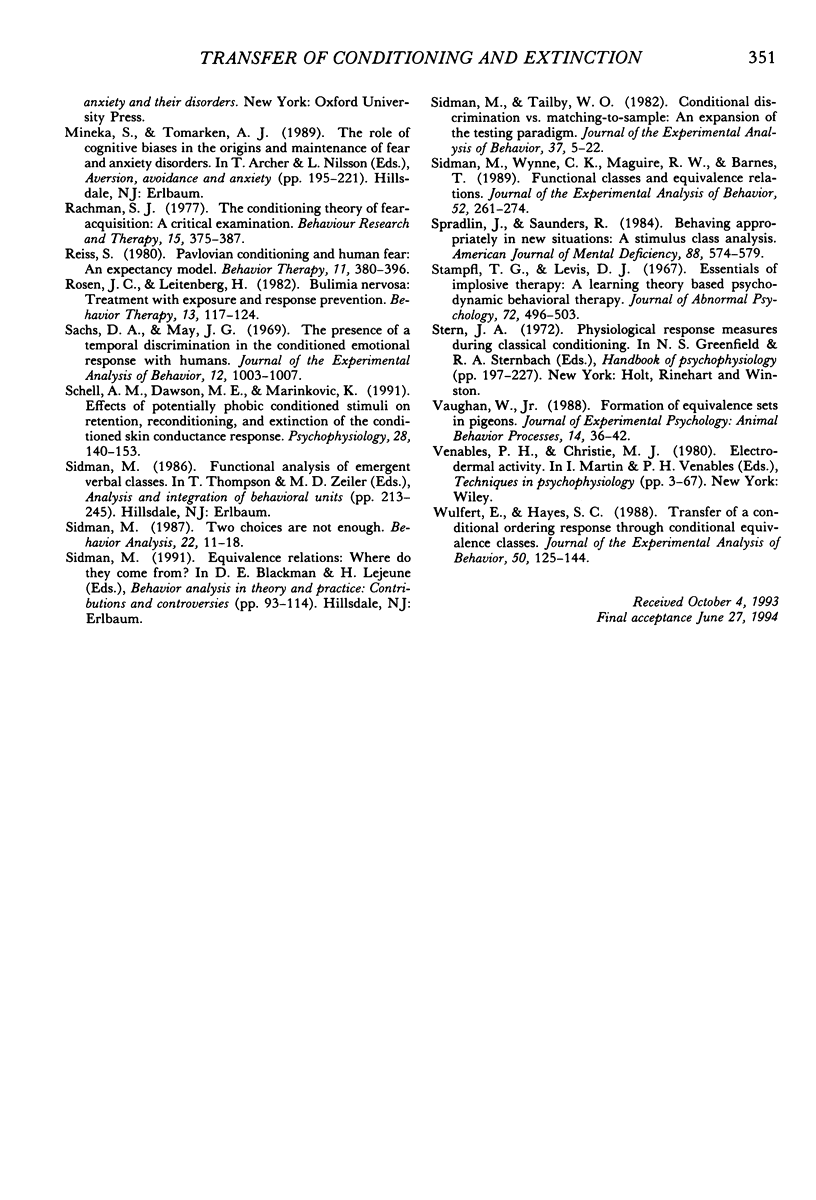
Selected References
These references are in PubMed. This may not be the complete list of references from this article.
- BULLOCK D. H., SMITH W. C. An effect of repeated conditioning-extinction upon operant strength. J Exp Psychol. 1953 Nov;46(5):349–352. doi: 10.1037/h0054544. [DOI] [PubMed] [Google Scholar]
- Cook E. W., 3rd, Hodes R. L., Lang P. J. Preparedness and phobia: effects of stimulus content on human visceral conditioning. J Abnorm Psychol. 1986 Aug;95(3):195–207. doi: 10.1037//0021-843x.95.3.195. [DOI] [PubMed] [Google Scholar]
- Dawson M. E., Schell A. M., Banis H. T. Greater resistance to extinction of electrodermal responses conditioned to potentially phobic CSs: a noncognitive process? Psychophysiology. 1986 Sep;23(5):552–561. doi: 10.1111/j.1469-8986.1986.tb00673.x. [DOI] [PubMed] [Google Scholar]
- Gale E. N., Stern J. A. Conditioning of the electrodermal orienting response. Psychophysiology. 1967 Jan;3(3):291–301. doi: 10.1111/j.1469-8986.1967.tb02709.x. [DOI] [PubMed] [Google Scholar]
- Gatch M. B., Osborne J. G. Transfer of contextual stimulus function via equivalence class development. J Exp Anal Behav. 1989 May;51(3):369–378. doi: 10.1901/jeab.1989.51-369. [DOI] [PMC free article] [PubMed] [Google Scholar]
- Geer J. H. Fear and autonomic arousal. J Abnorm Psychol. 1966 Aug;71(4):253–255. doi: 10.1037/h0023544. [DOI] [PubMed] [Google Scholar]
- Green G., Sigurdardottir Z. G., Saunders R. R. The role of instructions in the transfer of ordinal functions through equivalence classes. J Exp Anal Behav. 1991 May;55(3):287–304. doi: 10.1901/jeab.1991.55-287. [DOI] [PMC free article] [PubMed] [Google Scholar]
- Harrison R. J., Green G. Development of conditional and equivalence relations without differential consequences. J Exp Anal Behav. 1990 Nov;54(3):225–237. doi: 10.1901/jeab.1990.54-225. [DOI] [PMC free article] [PubMed] [Google Scholar]
- Hayes S. C., Kohlenberg B. S., Hayes L. J. The transfer of specific and general consequential functions through simple and conditional equivalence relations. J Exp Anal Behav. 1991 Jul;56(1):119–137. doi: 10.1901/jeab.1991.56-119. [DOI] [PMC free article] [PubMed] [Google Scholar]
- Kimmel H. D., Bevill M. J. Blocking and unconditioned response diminution in human classical autonomic conditioning. Integr Physiol Behav Sci. 1991 Apr-Jun;26(2):132–138. doi: 10.1007/BF02691036. [DOI] [PubMed] [Google Scholar]
- Kohlenberg B. S., Hayes S. C., Hayes L. J. The transfer of contextual control over equivalence classes through equivalence classes: a possible model of social stereotyping. J Exp Anal Behav. 1991 Nov;56(3):505–518. doi: 10.1901/jeab.1991.56-505. [DOI] [PMC free article] [PubMed] [Google Scholar]
- Lazar R. Extending sequence-class membership with matching to sample. J Exp Anal Behav. 1977 Mar;27(2):381–392. doi: 10.1901/jeab.1977.27-381. [DOI] [PMC free article] [PubMed] [Google Scholar]
- Levis D. J., Smith J. E. Getting individual differences in autonomic reactivity to work for instead of against you: determining the dominant "psychological" stress channel on the basis of a "biological" stress test. Psychophysiology. 1987 May;24(3):346–352. doi: 10.1111/j.1469-8986.1987.tb00307.x. [DOI] [PubMed] [Google Scholar]
- Lykken D. T., Venables P. H. Direct measurement of skin conductance: a proposal for standardization. Psychophysiology. 1971 Sep;8(5):656–672. doi: 10.1111/j.1469-8986.1971.tb00501.x. [DOI] [PubMed] [Google Scholar]
- Lynch D. C., Green G. Development and crossmodal transfer of contextual control of emergent stimulus relations. J Exp Anal Behav. 1991 Jul;56(1):139–154. doi: 10.1901/jeab.1991.56-139. [DOI] [PMC free article] [PubMed] [Google Scholar]
- Rachman S. The conditioning theory of fear-acquisition: a critical examination. Behav Res Ther. 1977;15(5):375–387. doi: 10.1016/0005-7967(77)90041-9. [DOI] [PubMed] [Google Scholar]
- Sachs D. A., May J. G., Jr The presence of a temporal discrimination in the conditioned emotional response with humans. J Exp Anal Behav. 1969 Nov;12(6):1003–1007. doi: 10.1901/jeab.1969.12-1003. [DOI] [PMC free article] [PubMed] [Google Scholar]
- Schell A. M., Dawson M. E., Marinkovic K. Effects of potentially phobic conditioned stimuli on retention, reconditioning, and extinction of the conditioned skin conductance response. Psychophysiology. 1991 Mar;28(2):140–153. doi: 10.1111/j.1469-8986.1991.tb00403.x. [DOI] [PubMed] [Google Scholar]
- Sidman M., Tailby W. Conditional discrimination vs. matching to sample: an expansion of the testing paradigm. J Exp Anal Behav. 1982 Jan;37(1):5–22. doi: 10.1901/jeab.1982.37-5. [DOI] [PMC free article] [PubMed] [Google Scholar]
- Sidman M., Wynne C. K., Maguire R. W., Barnes T. Functional classes and equivalence relations. J Exp Anal Behav. 1989 Nov;52(3):261–274. doi: 10.1901/jeab.1989.52-261. [DOI] [PMC free article] [PubMed] [Google Scholar]
- Spradlin J. E., Saunders R. R. Behaving appropriately in new situations: a stimulus class analysis. Am J Ment Defic. 1984 Mar;88(5):574–579. [PubMed] [Google Scholar]
- Stampfl T. G., Levis D. J. Essentials of implosive therapy: a learning-theory-based psychodynamic behavioral therapy. J Abnorm Psychol. 1967 Dec;72(6):496–503. doi: 10.1037/h0025238. [DOI] [PubMed] [Google Scholar]
- Wulfert E., Hayes S. C. Transfer of a conditional ordering response through conditional equivalence classes. J Exp Anal Behav. 1988 Sep;50(2):125–144. doi: 10.1901/jeab.1988.50-125. [DOI] [PMC free article] [PubMed] [Google Scholar]


